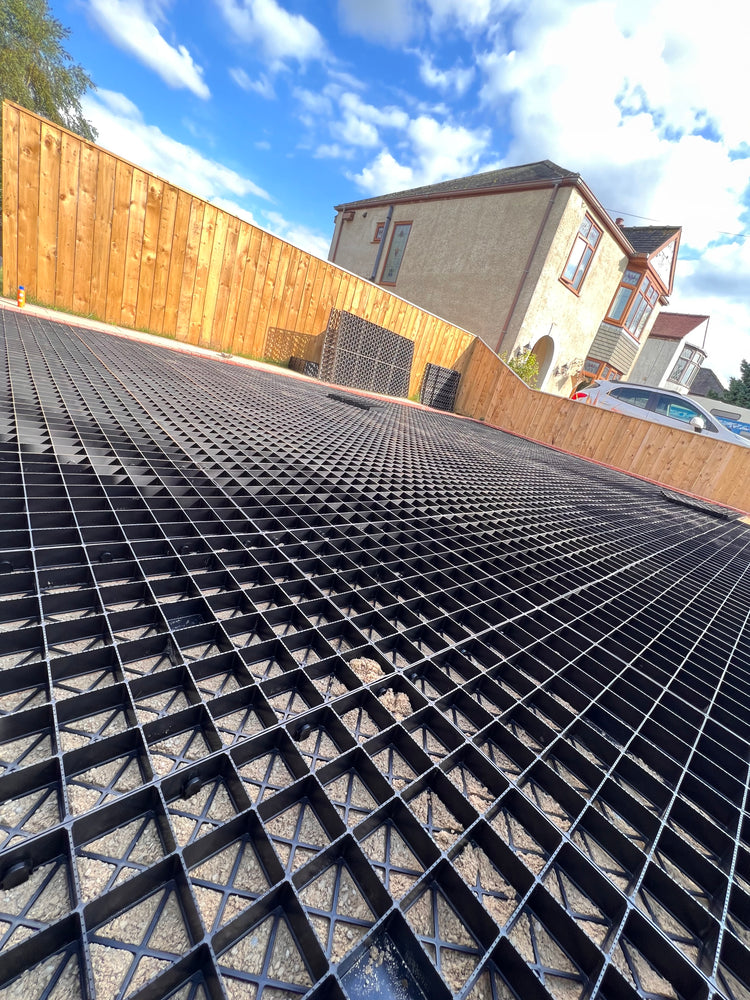Creating an inviting parking surface involves more than just greenery and flowers—it's about the foundation beneath your feet. Knowing how to lay gravel on soil and putting in a gravel driveway is a powerful way to enhance the aesthetics and functionality of your car parking space. In this comprehensive guide, we'll navigate the intricacies of this transformative process, exploring time-tested techniques and incorporating cutting-edge innovations.
For a project that stands the test of time, consider integrating the revolutionary plastic driveway grid. Overlaid over a compacted sub-base of hardcore or Type 1 MOT, these grids serve as a foundation, providing stability and preventing the undesirable migration of gravel. The result is a firm surface that not only elevates the visual appeal but also ensures practical longevity. In the first steps of your journey, it's crucial to source high-quality construction supplies. These materials form the backbone of your project, influencing its durability and resilience against the elements.
As we unravel the secrets behind successful gravel surfacing, we'll delve into the nuances of proper preparation, the strategic placement of gravel and the role of effective compaction. From traditional methods to modern solutions, this guide aims to equip you with the knowledge needed to turn your outdoor space into a haven of beauty and functionality.
Understanding the Plastic Driveway Grid Advantage
The plastic driveway grid is a game-changer in the world of gravel and resin-bound surfacing application. Unlike traditional methods, these grids offer a structured framework, creating a stable surface that distributes weight evenly. This not only reduces the risk of gravel displacement but also minimises the formation of uneven surfaces over time.
One of the key advantages of plastic driveway grids is their versatility. Whether you're envisioning a gravel-covered commercial car park or a robust driveway, these grids adapt to various shapes and contours, providing a seamless and professional finish. Their simple, interlocking design ensures easy installation, making them an accessible choice for both DIY enthusiasts and construction professionals.
The Foundation of Success: Quality Construction Supplies
Before diving into the gravel application process, it's crucial to invest in top-notch construction supplies. The quality of materials you choose will significantly impact the project's outcome, determining its resilience against weather elements, erosion, and regular wear and tear. The best gravel for walking path, driveway or surface is one that is affordable, matches your desired aesthetic and is readily available.
Consider opting for durable geotextile fabrics to provide an additional layer of protection against weed growth. These fabrics not only act as a barrier for weed growth and layer migration, but also allow for water drainage, maintaining the health of your soil underneath. When selecting gravel, choose options that complement the aesthetic you're aiming for while also considering factors like size and shape for optimal performance.
Mastering the Techniques: From Preparation to Compaction
Successful gravel application is a step-by-step process that begins with thorough preparation. Start by clearing the area of any debris, and excavating to a depth of at least 200mm, readying for the installation of a smooth, levelled, compacted sub base. This sets the stage for the next crucial step: the installation of the plastic driveway grid. Lay the grids one line at a time, working up and then back down the line, interlocking them securely to create a sturdy foundation.
Once the grids are in place, it's time to introduce the star of the show—gravel. Carefully distribute the gravel evenly, ensuring uniform coverage across the entire area. Use a rake or shovel to achieve the desired thickness, keeping in mind the intended use of the space.
Compaction is the final key to success in gravel application. Whether you opt for a mechanical compactor or the classic hand tamper, the goal is to achieve a tightly packed surface that minimises settling over time. Pay attention to high-traffic areas, ensuring they receive extra attention during the compaction process.
Conclusion: Transforming Outdoor Spaces with Gravel Magic
In conclusion, the art of gravel application is a fusion of time-honoured techniques and modern innovations. The plastic driveway grid, with its stability and adaptability, revolutionises the way we approach these projects. Paired with quality construction supplies, it ensures a foundation that withstands the test of time.
As you embark on your gravel application journey, remember that each step contributes to the overall success of the project. From meticulous preparation to the strategic placement of gravel and thorough compaction, attention to detail is key.
Elevate your outdoor space with the magic of gravel, transforming it into a haven of beauty and functionality. With the right techniques and the aid of plastic driveway grids and quality construction supplies, your landscape is poised for a stunning and enduring makeover.

